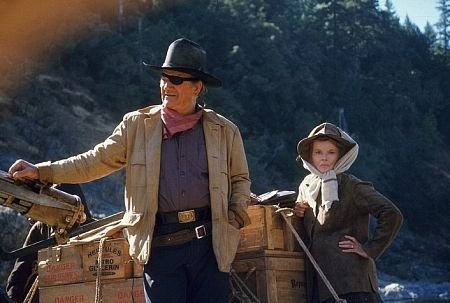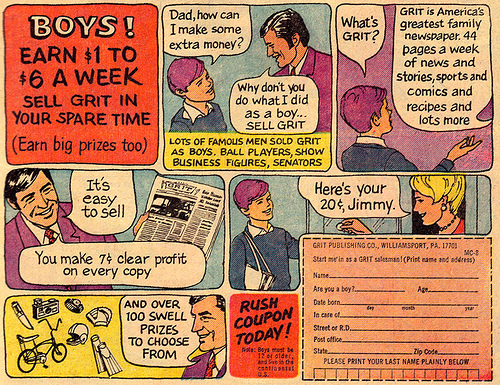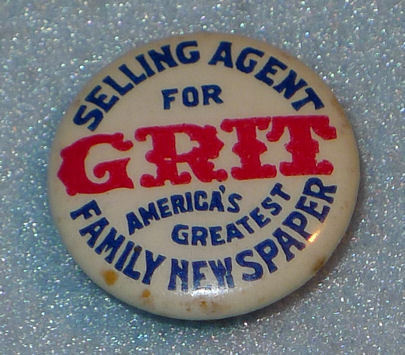True Grit. That term may bring up for you an image of John Wayne as Rooster Cogburn in the 1969 movie by that name.
Or an image of Jeff Bridges as Rooster in a 2011 remake.
But this isn’t about those guys with true grit.
It’s about guys like this one with true Grit.

Yes, this young man from 1938 does indeed have the true Grit.
But this is a different true Grit. It’s the truest one, a lot earlier than those other TGs.
Grit is a magazine, formerly a weekly newspaper, popular in the rural US during much of the 20th century. It carried the subtitle America’s Greatest Family Newspaper.
The publication was founded in 1892 as the Saturday edition of the Williamsport, Pennsylvania, Daily Sun and Banner. In 1885, the name was purchased for $1,000 by 25-year-old German immigrant Dietrick Lamade (pronounced Lam’-a-deh), who established a circulation of 4,000 during the first year.
While introducing such innovations as national newsboy delivery and direct mail, Lamade expanded his content to combine news, human interest articles, comic strips (sometimes filling ten pages), puzzles and serials in fiction supplements (“Grit Story Section”). Circulation reached 300,000 in 1916.
…In the early 1930s, it targeted small town and rural families with 14 pages plus a fiction supplement. By 1932, it had a circulation of 425,000 in 48 states, and 83% of its circulation was in towns of less than 10,000 population.
Grit went to a tabloid format in 1944.
At its peak in 1969, Grit had a weekly circulation of 1.5 million copies. [From the official Grit website.]
What did Lamade do that made his publication so wildly popular, especially in small-town America? Unlike most newspapers and magazines, his editorial choices focused on positive news. As he advised his staff in a policy outlined in a speech at a banquet for Grit employees:
Always keep Grit from being pessimistic. Avoid printing those things which distort the minds of readers or make them feel at odds with the world. Avoid showing the wrong side of things, or making people feel discontented. Do nothing that will encourage fear, worry, or temptation… Wherever possible, suggest peace and good will toward men. Give our readers courage and strength for their daily tasks. Put happy thoughts, cheer, and contentment into their hearts. [Wiki: Grit (Newspaper)]
Grit came to some readers by mail, but to many over the decades by the efforts of young door-to-door and street corner salesmen like the young boy in the 1938 photo above. They were often “recruited” by ads at the back of comic books.
If you answered the ad, you got a neat button to wear like this one from the 1930s to identify you as an official Grit salesperson.
You also got a cool delivery bag to carry your supply of papers on the street corner or from door to door.
You made 7 cents a week for each subscription paper you delivered or single issue you sold on the street. Along with opportunities to work toward those “swell prizes” mentioned in the comic book ad above.
And you got to distribute cheery news to your neighbors to help them keep a positive mental attitude. Like those in this issue from 1955.
Or those in this 1970 issue.
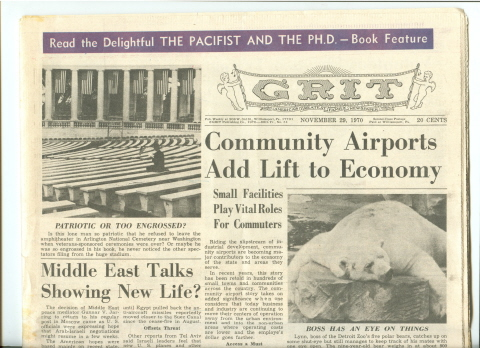 Grit was one of the first newspapers to feature full color photos, like this one of a young Prince Charles in 1972.
Grit was one of the first newspapers to feature full color photos, like this one of a young Prince Charles in 1972. And it kept up with the pop culture of the times, as you see in this 1979 edition featuring the Muppets and their first movie.
And it kept up with the pop culture of the times, as you see in this 1979 edition featuring the Muppets and their first movie. 
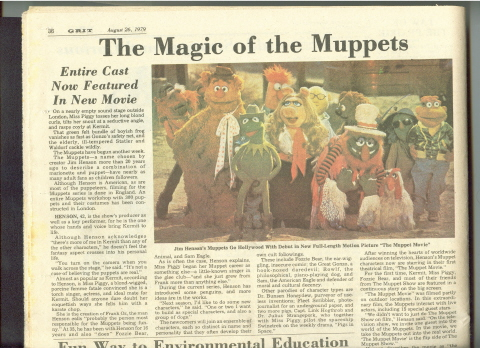
Beginning with the September 2006 issue, Grit became an all-glossy, bound magazine on a bi-monthly (rather than a weekly) schedule.
And they now have a glossy, contemporary online presence too. Check them out at:

